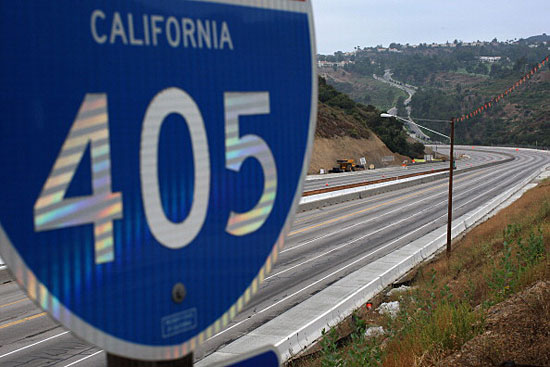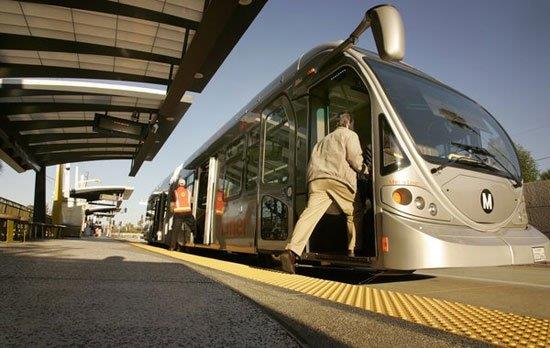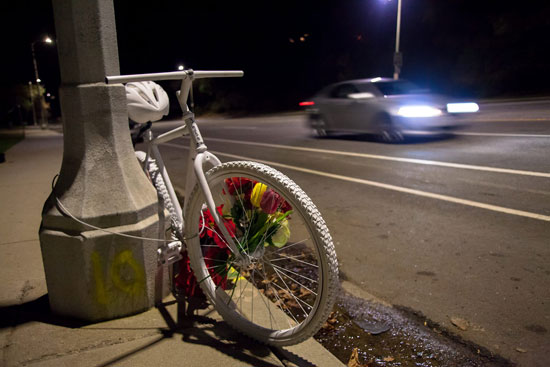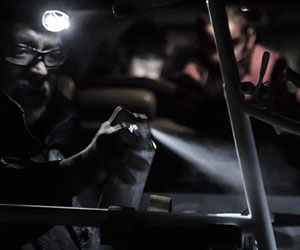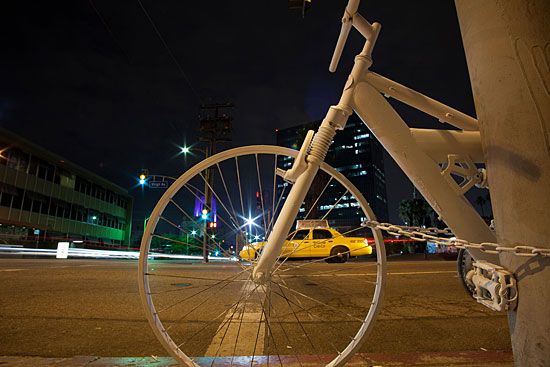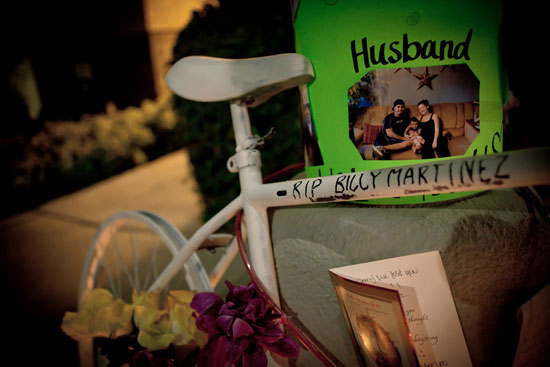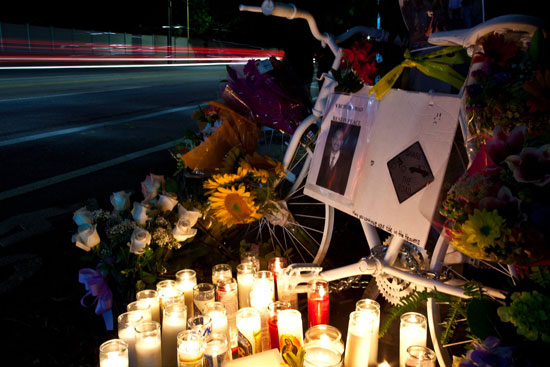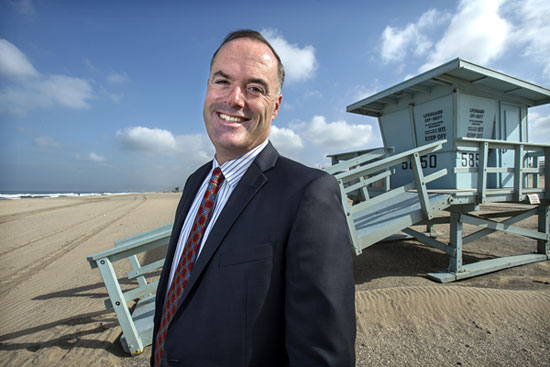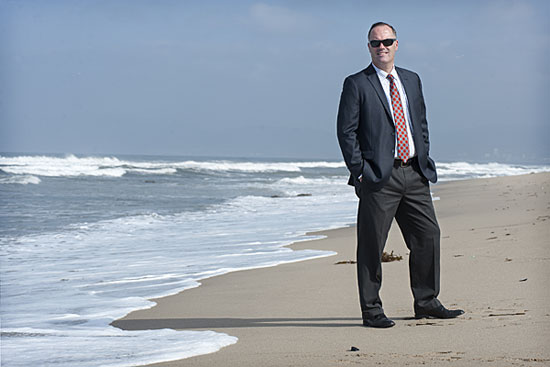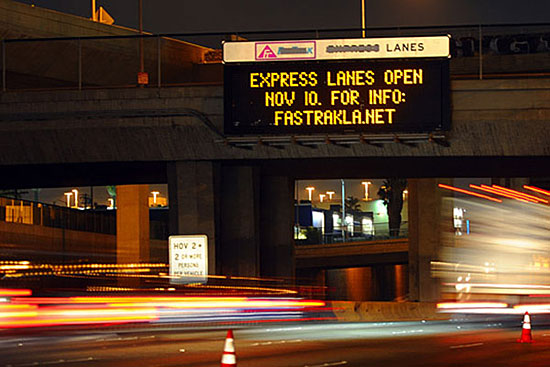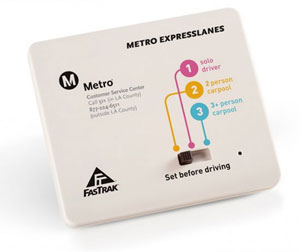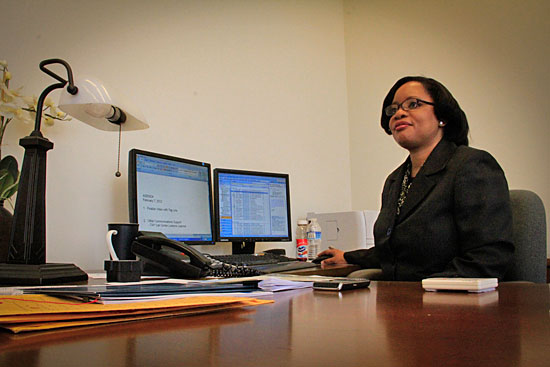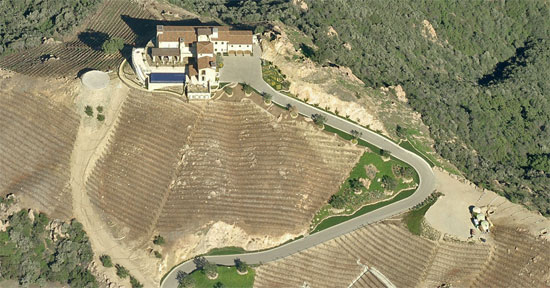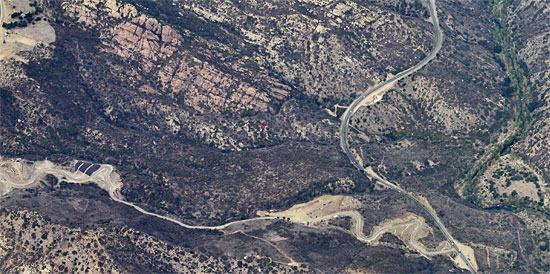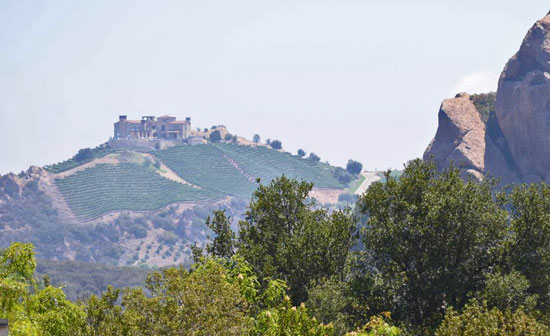Date set for 405 carpool lane opening
May 13, 2014
After five years of construction and epic freeway closures that drew international attention, the 405 Project is nearly ready for its biggest milestone: opening of the 10-mile northbound carpool lane that’s at the heart of the $1 billion-plus endeavor.
Officials have set a date for the lane’s grand opening—Friday, May 23, just in time for Memorial Day weekend traffic.
The lane opening doesn’t spell the end of the project altogether; numerous smaller tasks, such as landscaping, remain. But it marks a major moment of relief for construction-weary residents and motorists who have endured years of disruptions through the Sepulveda Pass.
“People in this part of town have put up with a lot, and it’s finally time for the public to begin experiencing one of the major benefits of this project,” said Supervisor Zev Yaroslavsky, who represents the area and popularized a name, Carmageddon, for the weekend-long closure heard ‘round the world—twice.
The 405 Freeway through the Sepulveda Pass, linking the San Fernando Valley and the Westside, is one of the nation’s busiest traffic hotspots, and the carpool lane is the central element in the project to improve it.
The new northbound lane will close a gap in the 405’s high-occupancy vehicle network and create the nation’s longest continuous carpool lane. For the first time, it will be possible for a carpooler to drive seamlessly from the Orange County border to the 101 Freeway. A 2.4-mile stretch of the new lane on the 405 was opened with little fanfare late last month, and is serving as a general purpose lane available to all motorists until the full carpool lane is inaugurated.
The carpool lane is not the only benefit to come out of the massive project, a joint undertaking by Metro and Caltrans.
Workers also have rebuilt three major bridges across the freeway and constructed safer, wider new flyover ramps at Wilshire Boulevard, along with soundwalls and other improvements.
Taken as a whole, the project is expected to improve capacity and safety, and to help relieve worsening congestion on the perennially challenging freeway in the years ahead—although no one’s claiming it will actually reduce the onslaught of traffic.
“Because of the project’s location and the constraints associated with development in the area, the I-405 Sepulveda Pass Improvements Project will not have a large influence on future traffic,” according to a project fact sheet. However, improvements to the roadway are expected to help mitigate congestion as 405 traffic through the Sepulveda Pass increases from an estimated 300,000 vehicles a day now to 430,000 in 2030.
Posted 5/13/14
Board clears way for $2B jail
May 8, 2014
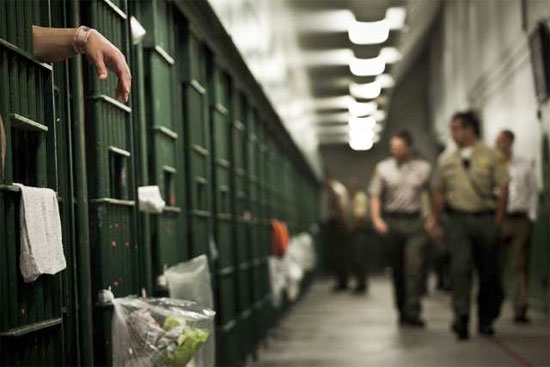
The grim Men's Central Jail will be razed for one that focuses on the needs of mentally ill inmates.
On the outskirts of a gentrifying downtown Los Angeles, where trendy eateries and pricey lofts are drawing a wave of hip urban pioneers, there sits a residence of a vastly different sort–“an antiquated, dungeon-like facility,” home to some 5,000 people, many of them mentally ill.
That’s how a blue-ribbon citizen’s commission in 2012 described the county’s notorious Men’s Central Jail, which has been around since the Kennedy Administration. More recently, the so-called MCJ was ground zero in the Sheriff’s Department brutality scandal that led to the indictments of 20 deputies and the departure of Sheriff Lee Baca.
For a decade, the Los Angeles County Board of Supervisors has been debating various plans to replace the old lockup with one that reflects the latest thinking in modern jail construction and management. Each time, the price climbed. The stakes were rising, too, as the federal government intensified its oversight of how the county was providing constitutional care for thousands of inmates with mental health problems.
So on Tuesday, under increasing pressure to act, a divided board set in motion what promises to be the most expensive construction project in the county’s history. It approved a nearly $2 billion plan to replace Men’s Central Jail with a facility designed to confront the unique architectural and staffing requirements for treating mentally ill inmates in county custody.
The board majority, which also voted to move forward the renovation of Mira Loma Detention Center in Lancaster to house women, picked one of five options for the new downtown jail provided by Vanir Construction Management, which was hired as a consultant by the supervisors. The company will not be a bidder on the project.
While there was no disagreement among board members about the need to replace the Men’s Central Jail, the potential price of the undertaking drew strong warnings from Supervisor Zev Yaroslavsky. He cast the lone vote against authorizing the expenditure of $30 million to begin design work and an environmental review of Vanir’s “Option 1B.” (Voting in favor of the plan were Supervisors Don Knabe, Gloria Molina, and Michael D. Antonovich. Mark Ridley-Thomas abstained.)
Yaroslavsky argued that the board should have been given alternatives to incarceration that might reduce the number of mentally ill inmates in the new jail, thus possibly lowering the construction and operating costs borne by taxpayers.
“I think I have been, as a member of this board, somewhat shortchanged by not having that information available to me as I’m being asked to make a decision—a $2 billion decision,” Yaroslavsky said, adding: “All of us have been around long enough to know that if you’re telling us it’s $2 billion today, it’s not going to go down. It’s only going to go up.”
Yaroslavsky urged the board to delay a vote until more information on diversion programs for the mentally ill was provided, rather than being forced to decide solely on a series of construction scenarios. He also noted that District Atty. Jackie Lacey was leading a high-powered task force on mental health and substance abuse diversion that could inform the board’s ultimate decision.
Testifying before the board, Lacey said that since a big chunk of the new jail’s cost is for the mentally ill, “you should know that there’s a committed group of professionals …who are looking for alternative ways to address this issue. We’re serious about it, and I’m optimistic.”
Assistant Sheriff Terri McDonald, who oversees custody operations, acknowledged the importance of increasing capacity for inmates placed in community diversion programs. “I don’t think the right solution is just build, build, build, build. It’s too expensive. It’s not sustainable.”
But, she said, such efforts must “run along parallel tracks” with the design and construction of a new jail, which is essential for the inmates and the county’s legal position with the federal government.
Supervisor Antonovich, who, with Molina, pushed the vote forward, agreed: “If we don’t act,” he said, “the choice will not be ours, but up to a receiver who will force us to act, at a much higher cost.”
Posted 5/8/14
Locking in fares on the Orange Line
May 8, 2014
Fare gates—they may not be just for trains anymore.
When Metro began latching the turnstiles to L.A.’s subways last year, it marked the beginning of the end for the decades-old honor system that enabled many to ride for free. Since then, gate latching has spread rapidly. By the end of May, all rail stations with turnstiles will require a valid TAP card for entry.
Now similar barriers may be coming to the Orange Line busway, which provides rail-like service in bus-only lanes.
A Metro report released Monday said it would be possible to gate all 18 stations of the San Fernando Valley line. Metro’s Board of Directors later this month will decide whether to install gates at an estimated cost of $24.6 million, or go with another option, such as rearranging non-latched card readers—known as “stand-alone validators”—to encourage more people to use their TAP payment cards.
The report recommends a more detailed engineering analysis on installing gates while also testing the stand-alone validator plan at two stations. The non-gating option is cheaper initially and quicker to implement, but it would still rely on the honor system and enforcement by the Sheriff’s Department, said David Sutton, who heads up the gate latching project for Metro.
“Gating is more compulsory,” Sutton said. “It’s going to stop you if you don’t tap. A stand-alone validator is not going to stop you.”
The effectiveness of simply rearranging the TAP card validators is unknown. The option is currently being tested at light rail stations but “the jury is still out,” Sutton said.
If the agency decides to go the gating route, most Orange Line stations will pose no major logistical barriers. However, because the Warner Center station is situated on a public sidewalk, the agency would need to purchase land from the City of L.A. to create space for gates. And, at the heavily-used North Hollywood Station, twice as many gates will be needed to ensure that passengers can get in and out quickly and safely. The entire process, from planning to construction, could take two years or more, Sutton said.
For gating on the Orange Line to be effective, additional fencing must be installed. The current fencing along the backs of station platforms is only 3½ -feet high. It would need to be modified or replaced with 5-foot-high fencing to keep out all but the most dedicated scofflaws.
The move toward gating the Orange Line started in January, after Sheriff’s reports showed that up to 22% of riders were not paying their way. Metro’s Board of Directors, acting on a motion by Supervisor Zev Yaroslavsky and L.A. City Councilmember Paul Krekorian, directed the agency to develop options to fix the problem.
As plans move forward, Sheriff’s Commander Michael Claus—Metro’s head of security—has already ramped up enforcement. By February 11, the fare evasion rate had come down to 7%. And, to bolster his team’s efforts, Claus released a 30-second video that is being broadcast on the buses via on-board televisions. The clip shows riders how to load and use their payment cards—and what the consequences will be if they don’t. Citations for single offenses are usually $75, the current cost of an unlimited 30-day pass.
The estimated $24.6 million cost of gating the Orange Line could be offset by increased revenues. Last fall, Metro estimated it would recover an additional $6 million per year in fares from latching the Red Line alone. Still, according to agency spokesperson Paul Gonzales, installing gates may prove too costly at some locations.
“Some stations may take 10 or 15 years to pay off,” Gonzales said. “Is that worth it? That’s something the Board will have to decide.”
The Orange Line decision comes as the agency faces the possibility of fares going up—always a contentious proposition. Still, even if fares increase, the riding public may be able to take some solace in the fact that there will be fewer freeloaders on the system.
“There’s a basic element of fairness,” Gonzales said. “People think, ‘Why should I pay and other people not pay?’ ”
The decision on the Orange Line goes to the System Safety and Operations committee meeting next week before heading to the full Board for consideration on May 22.
Posted 5/9/14
Ghostly roadside remembrances
May 8, 2014
The roadside works of art are ethereal, almost glowing, alive with flowers or flickering candles. “Ghost bikes,” as they’re called, gently command attention even on the fast-moving streets of Los Angeles.
But the white bikes’ presence goes beyond artistic provocation. They also speak to a life-and-death reality—the fact that even as bicycling in L.A. grows in popularity, too many bicyclists are being hurt or killed on our streets.
Danny Gamboa keeps a running spreadsheet of every Southern California cycling fatality. So far in 2014, 37 names have joined his list, leading to installation of white “ghost bikes” from Alameda Street to Sunset Boulevard, from Huntington Beach to Twentynine Palms.
“You strip a bike, you paint it, you go to the place where this tragedy happened and you’re basically trying to make the world a better place,” says Gamboa, a 40-year-old Long Beach filmmaker and artist who chronicled the Ghost Bike phenomenon in a documentary motion picture he made last year with his partner, Kat Jarvis. He is part of the story himself, working with a loose coalition of about a dozen volunteers who mobilize after cycling fatalities to paint and install bikes in honor of fallen friends, family members or even strangers.
“You’re trying to help the community heal and come together,” he says. “They write on the bike, ‘I don’t know you but I’m sorry for your loss.’ People bring flowers and candles and pictures. It’s a really touching tribute, and stuff like that is what keeps us going.”
This year, as Bike Week dawns in Los Angeles, Gamboa and his group are being recognized for what they do.
Ghost Bikes L.A. will receive a “Golden Spoke” award on Tuesday, May 13, as part of the 11th annual “Blessing of the Bicycles” event at Good Samaritan Hospital. The honor—bestowed as part of a cavalcade of bike events including Bike to Work Day and a Bike Night at Union Station—strikes a poignant note among the more festive observances.
“It’s very moving when you drive around and you see a white bike. It’s kind of eerie,” says Katrina Bada, manager of marketing and public relations at Good Samaritan. “It’s a way for us to show our support of the bicycle community and a memory of those who perished.”
Gamboa’s fellow volunteers come from all over: the San Fernando Valley and other parts of L.A., Ventura and Orange counties, the Inland Empire. “We like to do it as a group. It’s something we do for safety reasons and also because it’s such a somber thing that we make it a point to afterwards go out to have a bite to eat and have a discussion… on what happened, things that can be done so that it doesn’t happen again.”
The ghost bike phenomenon is believed to have originated in St. Louis, Missouri, about a decade ago, and has since spread worldwide. Gamboa, an avid cyclist, knew that people had been putting up cycling memorials around Southern California for years. But he hadn’t gotten involved personally until 2011, when he went along with friends as they installed a ghost bike to honor triathlete Amine Britel, who’d died bicycling in Newport Beach.
“He was hit from behind and killed, and from that very first night, it just got ahold of me,” Gamboa says. “I was like, this is really powerful, it’s really important.”
In addition to his hands-on efforts installing the memorials, Gamboa also curates art shows that include images of ghost bikes, like the “Bike Love” pop-up exhibition now on display at the Museum of Ventura County. Despite the somber reason for the work, Gamboa says it is all ultimately uplifting.
“It’s like a calling,” he says. “You’re tired, you just had a full day of work, and then something happens. You basically just pull yourself up by your little bootstraps and you go out there in the middle of the night, somewhere you’ve never been, tributing someone that you don’t know, and it doesn’t matter…We’re all equal, we’re all on bikes, and they’re one of us.”
Posted 5/8/14
New beach chief rides the waves
May 8, 2014
Gary Jones’ new job as director of the Los Angeles Department of Beaches and Harbors is a little like going surfing while wearing a tie. It’s an ongoing attempt to marry L.A.’s freewheeling beach culture with business concerns such as permits, parking, environmental impact and—always—budget.
Access to L.A. County’s beaches remains an emotional issue for residents, many of whom treasure days at a local beach among childhood memories, Jones says. The 45-year-old Englishman’s first visit to Southern California took him to Venice’s Muscle Beach. “Venice Beach and the L.A. lifeguards are iconic, in part from Baywatch. Surfing, the beach life, the fire pits —that type of culture is very much transmitted around the world,” Jones says.
Jones’ Marina del Rey office affords a picture-postcard view of blue sky, seagulls and sailboats. Hailing from the English “rowing town” of Bedford, he loves to observe rowing teams from UCLA and Loyola Marymount University take on the chilly early mornings. On his desk are the less enticing realities of the gig: The first proposed increases in fees affecting the public since 2009 are set to come before the Board of Supervisors next week. They include increases in summer parking fees, beach permits for organized recreational classes such as yoga, youth camp expenses and dry storage of trailered boats.
And if past experience is any guide, those kinds of changes—ranging from new meet-up rules to a misunderstood Frisbee policy—can kick up a lot of sand.
“In the dynamics surrounding the county’s operation and ownership of beaches and the coastline, there are some very interesting forces at play,” adds Jones, who served as interim director for eight months before stepping into the permanent post on April 15. “Underpinning it all is that overwhelming sense that this is something the public should have access to. Some people think that access translates to free, or as low cost as possible. Or if I want to join 50 or 100 of my closest friends and train for a triathlon, I can do that.”
Standing out among the currently proposed increases are a new fee for the annual senior parking pass ($25) and substantial hikes for five-day youth camps, some of which have recently been on hiatus. Sailing and surf camp fees would go up sharply (sailing rising from $165 per participant to $375, surf camp from $165 to $300). Jones notes that the department continues to look for ways to cut operating costs so fees may end up being lower than proposed. He adds the department will still give financial assistance to needy participants.
Jones says the department is also looking to expand the county’s popular water taxi service that transports the public to concerts and events at Chace Park, along with other stops including Fisherman’s Village and Mother’s Beach. This summer, the service is slated to begin June 19.
Jones, who moved to the U.S. in 1998, began his Southern California career managing assets for the city of San Diego. He came to Los Angeles County’s beaches and harbors department in 2009. Jones stepped into the interim director position when then-director Santos Kreimann became acting county assessor after the elected assessor, John Noguez, was placed on leave pending a trial on corruption charges.
With the approach of Memorial Day and the traditional opening of summer beach season, Jones says his foremost concerns include the continuing redevelopment of Marina del Rey (money from private development flows into the general fund, he says) and beach maintenance for the summer onslaught (sand grooming, restroom upgrades, parking lot re-surfacing).
Also at the top of the list: A greater social media presence and a more user-friendly website to provide up-to-the-minute information on parking and rates, easily accessible by smart phone or tablet.
Jones adds that some beaches require a delicate balance between humans and wildlife. Visitors don’t always understand the needs of the grunion or the Snowy Plover, or why the “rack line” of seaweed left behind by the tide represents an important ecosystem, not just a source of odor and pesky sand flies. “We have 50 million plus people using our beaches every year —how do you balance that with being a good environmental steward?” muses Jones.
And why did Jones take on this balancing act? “No municipal department has the blend of what this department is responsible for,” Jones asserts.
“I don’t think I could have been satisfied churning out commercial real estate deals or office deals,” he says. “It’s very rewarding when you see a project come together and you see people enjoying it, the impact it has on a community. I think that’s what makes me tick.”
Posted 5/7/14
Love and hate in the express lane
April 24, 2014
When it was time for the public to finally be heard on Los Angeles’ new freeway toll lanes, Metro got an earful.
“I love the Metro Express Lanes!!!!! We should have them throughout the city.”
“These fast track lanes have turned into nothing but Lexus Lanes.”
“Express Lanes are the best thing ever to happen to Los Angeles freeways.”
“The Express Lane program is an absolute joke.”
“Please Please Please…expand the express lanes!!!!!!
“ADMIT IT—IT’S A FAILURE!!!!
Metro had asked for the public’s take in March as part of a broad analysis to help the agency’s board of directors determine whether the “high occupancy toll lanes” on two of Los Angeles’ busiest freeways—the 110 and 10—should be made permanent. And on Thursday, the directors gave a unanimous thumbs-up to extending the experiment, despite the deeply divided motoring public reflected in the more than 700 emails the agency received.
The federally-funded program lets solo drivers, who pay a toll, share lanes with carpoolers, who can continue to drive in them for free, with one important and controversial caveat: everyone must have an electronic device called a transponder to use the “ExpressLanes.” That requires putting $40 into a “pre-paid” toll account, unless a person’s income qualifies him or her for assistance.
Stephanie Wiggins, Metro’s executive in charge of the toll lanes, presented the analysis to the board on Thursday. She said in an interview that she’s “never, never, never” had a job that has attracted so much public heat. “People really love them,” Wiggins said of the new lanes, “or they really hate them. There’s no in-between.” By overwhelming majorities, according to a Metro survey, those who obtained transponders are happy and those who didn’t are not.
Metro director Mike Bonin, who also is a member of the Los Angeles City Council, lauded the pilot program but acknowledged, like others on the board, that it is still a work in progress. “We’re in the breaking eggshells phase of making an omelet,” he said.
It’s not surprising, of course, that the dramatic changes would generate consternation and confusion among motorists who for decades have been freely using the carpool lanes—for 39 years on the 10, east of downtown Los Angeles, and 15 years on the 110, which slices through the heart of the city.
Statistical measures compiled by federal transportation officials in advance of the board’s vote have done little to settle the debate. They can be used by either side to make a glass-half-full/half-empty argument.
The pilot program was intended to improve traffic flow in both the toll and “general purpose,” or free, lanes, while also encouraging the use of transit alternatives, such as the Silver Line buses that travel along the toll lanes. So far, bus ridership has jumped but traffic times are not much different than before the experiment, according to a recent analysis by an independent firm hired by the Federal Highway Administration. Some drive times are slightly faster since the tolls went into effect, while others are slower, depending on the specific hours studied during peak morning and afternoon traffic.
Wiggins acknowledged that “the numbers, on their face, look marginal.” But she said there’s a clear bright spot, too: Solo drivers who’ve moved from the free lanes into the toll lanes have saved more than 17 minutes on some of their drives. And for those who haven’t changed their behaviors and remain in the free lane, they’re not really any worse off than they were before, she said. “And that can be perceived as a positive.”
What’s more, Wiggins noted that the $18 million in net toll revenues generated since the pilot began has far exceeded early projections. That means more money can be reinvested in transit improvements and inducements along the freeway corridors and that no public subsidies will be necessary in the future because the project is raising enough money to be self-sustaining.
As of February, some 260,000 transponders have been issued by Metro, well above the 100,000 that had been set as an initial goal—a fact that prompted board member and L.A. County Supervisor Zev Yaroslavsky to remark: “People are voting with their cars.”
Wiggins also reported to the board that, in the future, Metro will work even more closely with the California Highway Patrol to crack down on scofflaws who drive in the lanes without transponders and to ticket solo drivers who cheat the system by setting their transponders to get a free ride by claiming multiple people are in the vehicle.
One of the most controversial elements of the toll lanes project had been the initial imposition of a $3 monthly “maintenance fee” on people who purchased transponders but who used the toll lanes fewer than 4 times a month. The fee was intended to recoup a charge levied for each transponder on Metro by the toll lane’s private operator.
To legions of travelers, it seemed unfair that anyone should be charged for not using something. To encourage drivers to participate in the toll lanes experiment, the Metro board last year waived the fee for Los Angeles County residents, who represent 86% of account holders, according to Wiggins.
On Thursday, the Metro board attacked the issue again, this time voting 8-3 in favor of a motion by director and L.A. County Supervisor Gloria Molina to impose a $1 monthly fee on everyone with a transponder, no matter how often they use the toll lanes. In this way, she argued, Metro will no longer be underwriting the fee and will have some $2 million more annually to reinvest in the system and in transportation benefits in communities along the 10 and 110 freeways.
Now that the toll lanes are becoming a permanent part of Los Angeles’ famous (infamous?) car-centric landscape, Wiggins said it’s crucial that Metro do a better job of communicating the value of the program to motorists.
A top priority, she said, will be to educate the public on how transportation is funded.
“We didn’t do ourselves any favors,” she said, “by naming them freeways because we know freeways aren’t free.”
Posted 4/24/14
Flurry of work as May opening nears
April 24, 2014
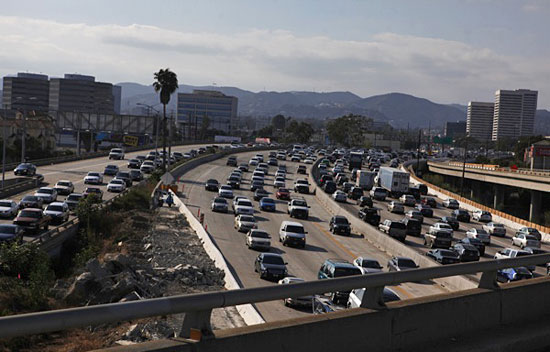
The end is in sight for the 405 Project, with a 10-mile northbound carpool lane set to open next month.
It’s a been a long, hard slog, but the 10-mile carpool lane at the heart of the 405 Project is finally set to open next month, prompting a surge of activity as workers scramble to finish the job.
The latest series of overnight closures, involving all of the 405’s northbound lanes, will run for four successive nights starting tonight, Thursday, April 24, so that workers can install signs over the freeway. Tonight’s closure is from Getty Center Drive to Greenleaf Street, with some ramps closing as early as 7 p.m. and lanes shutting down beginning at 10 p.m. Everything’s expected to reopen by 6 a.m. on Friday. Then, for the next three nights, the action shifts to the northbound lanes between Skirball Center Drive and Greenleaf Street, following roughly the same timetable. Full details are here.
The closures are part of the intensifying effort to finish up the carpool lane, which will represent the final and most significant milestone in the five-year-long project.
Other improvements along the way have included creating wider, safer flyover ramps at Wilshire Boulevard and rebuilding and seismically reinforcing three bridges over the freeway. Landscaping and assorted other finishing-up tasks, including repairing parts of the freeway surface, will still be in the works even after the carpool lane opens next month. But the big goal is in sight and getting closer each day, although the precise date of the opening has not yet been announced.
“There’s a lot of action at the end,” said Mike Barbour, who is managing the effort for Metro. “The importance of making this May date is important to us…You’re getting the intensity of ‘Let’s wrap this up.’ ”
The work plans have generated a seemingly incessant stream of closure notices going out from project officials in recent weeks—and there’s no immediate end in sight.
“There are still a lot more nighttime closures in the next month,” Metro spokesman Dave Sotero confirmed.
And a 55-hour-long closure of a single freeway lane from Sunset Boulevard to Moraga Drive is set to run from Friday, May 2 through the morning of Monday, May 5. (More information is here.)
Even though it’s expected to last for a long time, a single lane closure like that should be a piece of cake for motorists who’ve had to roll with major shutdowns from Carmaggedon to Jamzilla—nicknames that got the public’s attention and helped foster the cooperation needed to accomplish the massive tasks at hand.
“This was always a project of hyperbole, but this was legitimate hyperbole,” Sotero reflected, noting that no other project in memory has affected such a uniquely “geographically constrained” area, the Sepulveda Pass, through which 300,000 motorists pass each day.
“I’m getting the sense that there will be a massive sigh of relief that the lane is open,” Sotero said.
Those who want to learn more about the final phases of the long-running project can attend a community meeting at 6 p.m. tonight at the Westwood Recreation Center, 1350 S. Sepulveda Boulevard.
Posted 4/24/14
Bag bans bring parks a holiday gift
April 24, 2014

Griffith Park Maintenance Supervisor Michael Watkins says the bag measures are "definitely working."
As the guy in charge of picking up Griffith Park’s litter, Michael Watkins usually dreads this week.
“Easter is our busiest day of the year, by far,” says the park maintenance supervisor. “We get about ten times the normal amount of garbage. Doing what I do on the week after Easter is like working at Macy’s on Black Friday or being a tax man on April 15.”
This year, however, the bunny left a pleasant surprise for Watkins: a notable reduction in one of his least favorite trash items—single-use plastic bags.
“That bag ban the city passed is definitely working,” he said. “Usually the wind blows them everywhere—up in the trees, along the fence line. This year, there weren’t as many. I can see a huge difference.”
In January, after years of analysis and discussion, the City of Los Angeles became the largest city in the nation to ban plastic bags. The ordinance made the city one of more than 100 California municipalities to outlaw the flimsy, disposable sacks, which can take centuries to decompose, but which are rarely recycled. Used and tossed by the millions, the bags typically end up in landfills after a single use, or blow out onto the streets, storm drains and beaches, where they endanger fish and wildlife.
At the time, opponents of the ban and representatives of the plastic bag industry argued that the bags’ environmental impacts were overblown. But as the area covered by bans has grown to encompass about a third of California’s population, those on the front lines say they’re beginning to see a difference.
A study done in the aftermath of San Jose’s comprehensive 2012 bag ban found that plastic bag litter had dropped by 89 percent in the storm drain system, 60 percent in creeks and rivers and 59 percent in streets and neighborhoods.
“We’ve been seeing a lot less of them, which is good because they’re a real eyesore,” says Shawn Wright, a maintenance worker at Whittier Narrows Recreation Area in unincorporated Los Angeles County, where a county ban on single use plastic bags has been in place since July 2011.
“Of course, there are still some around, blowing into the lakes and onto the fence line, and we still have all the other debris,” Wright said. As usual, he said, it was taking days to clean up the mess left by the tens of thousands of picnickers who had filled—and refilled—the 15-acre park’s trash bins on Sunday.
“The little plastic eggs, the candy wrappers, the confetti, the watermelon rinds, the mango peels, the aluminum foil from the barbeques, the charcoal bags . . . “
Maintenance workers noted one downside to the bag bans: Without plastic bags to fall back on, picnickers seemed to have fewer options to consolidate their trash.
“People would use them to carry, say, their hamburger buns into the park, and then put their empty Coke cans and napkins and whatever into them and toss them when they were finished,” says Rich Cambaliza, a manager for Rich Meier’s Landscaping in Lancaster, which helps maintain El Cariso Community Regional Park in Sylmar. “They were a pain in the butt, but people did have them when the trash cans overflowed.”
And the bag bans have forced picnickers to improvise with leftovers as well, says Steve Dennis, El Cariso’s landscape contract monitor.
“I’ve been seeing people using our Mutt Mitts—the bags we supply here at the park for dog waste—to take home their leftover barbeque or whatever,” says Dennis, laughing that the trick is giving new meaning to the phrase “doggie bag.”
“Hey, they’re clean and right from the manufacturer. I guess you just have to look past what they’re actually supposed to be used for,” he laughed.
At Griffith Park, Watkins says cleanup crews enlisted the public’s help on Sunday, handing out trash bags and asking them to pitch in. By Tuesday afternoon, he said, the cleanup was almost finished—and he had a new candidate for least-favorite garbage.
“If only we could get people to stop using that damned plastic Easter grass,” he said.
Posted 4/24/14
A high note for mountain protections
April 17, 2014
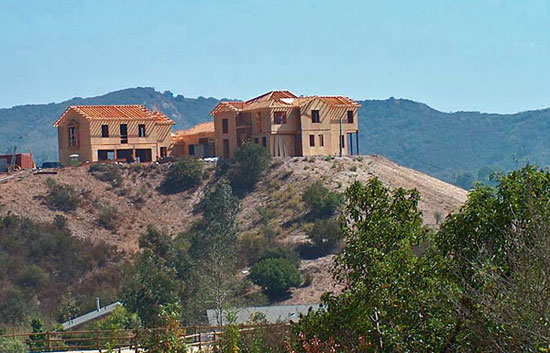
Ridgeline developments like this will be banned in the Santa Monica Mountains by the county's new rules.
In a vote that will resonate for generations, the California Coastal Commission this week cleared the way for the enactment of a wide-ranging plan to protect the Santa Monica Mountains from development that already has scarred portions of one of the region’s most important environmental and recreational resources.
The 12-member commission voted unanimously in favor of a land use plan adopted last month by the Los Angeles County Board of Supervisors, despite strong opposition from real estate development interests. The Coastal Commission vote was mandated by state law and represents a milestone in the years-long effort to preserve the mountains along the coast as a rural escape for tens of thousands of visitors each year.
The plan will, among many other things, ban ridgeline development, save oaks and other native woodlands, outlaw poisons that can harm wildlife, protect water sources, restrict lighting to preserve the night sky and prevent the opening of new vineyards, which take a toll on the land and water.
“This is a stunning achievement, to get a unanimous vote on a plan that has been on-again, off-again for three decades,” said one of its strongest advocates, Supervisor Zev Yaroslavsky, whose district includes the Santa Monica Mountains. “It’s a tribute to all the stakeholders—environmentalists, equestrians, homeowners, agricultural interests, among others—who came together to find common ground.”
During testimony before the Coastal Commission on Thursday, Yaroslavsky said he had spent two decades on the Board of Supervisors “fighting against ill-conceived developments that have desecrated” the mountains. He told the commission that it now had a “historic opportunity” to stem the damage, an opportunity the commissioners seized.
They left virtually untouched the county’s proposed plan, which was crafted by Yaroslavsky’s office and the Department of Regional Planning. The only substantive addition was a clause that expressly affirmed the right of residents to grow organic gardens through ecologically sound farming methods—a move considered necessary because of misinformation that had been spread about the plan in the days leading up to the commission’s vote.
Much of Thursday’s day-long hearing in Santa Barbara was consumed with people testifying in support of the county’s plan. But one woman used her time to blast the 11th-hour falsehoods aimed at derailing the plan by claiming, among other things, that food gardens would be banned.
“It’s just not fair to those of us who aren’t experts to be given emails that say you’re not going to be able to grow your own food,” said Janet Friesen of the Natural Resources Defense Council. “I’m here to say that I don’t think it’s right when there are paid lobbyists who are misleading people.”
Leading the campaign against the county’s plan, called a Local Coastal Program, was Don Schmitz, a consultant and lobbyist who also owns a vineyard in the Santa Monica Mountains. Under the plan, existing vineyards can remain in business, although no new ones would be allowed to open—a restriction that Schmitz criticized during his testimony on Thursday.
He disputed the negative environmental impacts of vineyards, calling the businesses a “significant draw to the Santa Monica Mountains National Recreation Area.”
“Not everybody is able or even wants to throw on a backpack and do 10 miles on the Backbone Trail,” Schmitz said of one of area’s tougher hikes.
Now that the Coastal Commission has endorsed the plan’s policy direction, it will take another vote in the months ahead on the details of its implementation. The matter will then move back to the Board of Supervisors for a final vote.
Posted 4/11/14




